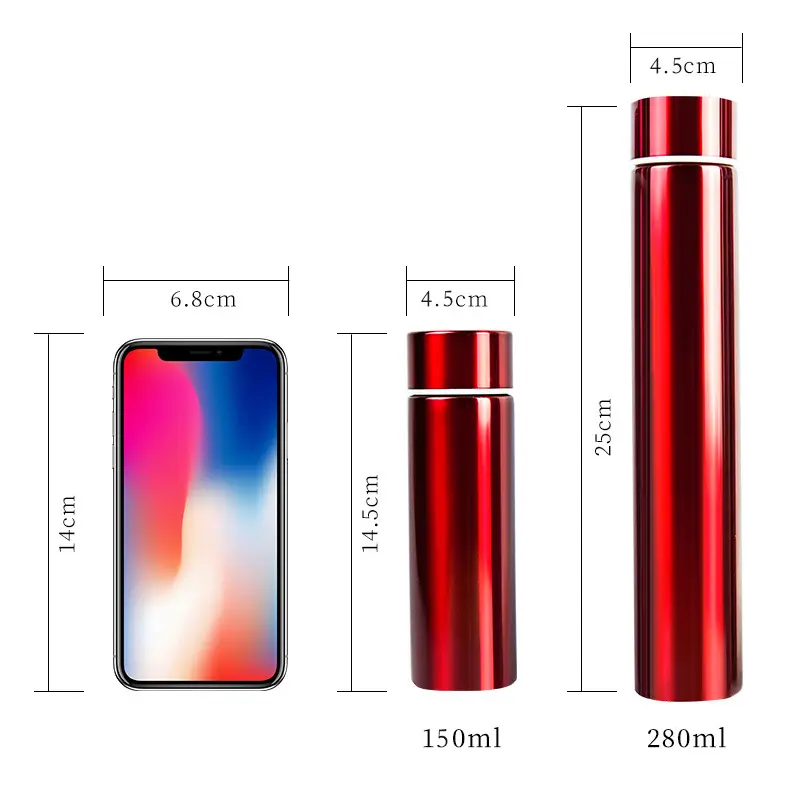Every sip of hot water you drink from the thermos cup is history
"Drink more hot water" is such a universal answer. Whether you are sick with a cold or relieving fatigue, "drink more hot water" seems to be a panacea.

The thermos cup carrying this panacea actually took shape as early as a thousand years ago in the Song Dynasty.
The main materials of the ordinary thermos flasks we use today are glass and mercury. An important process in production is mercury plating, and the mercury plating technology has been very mature in the Song Dynasty.
Specifically, mercury plating is to apply mercury (mercury) gold liquid alloy on the surface of the object, then heat and bake it. After the mercury evaporates, the gold-plated object is obtained. As for glass, its history can be traced back to the Western Zhou Dynasty. However, the early glass manufacturing process was not mature enough. People described the glass at that time as "very bright in color but light and brittle in texture" and could not withstand high temperatures. After the Song Dynasty, people began to add Nanpeng sand to the formula for making glass, which improved the texture of the glass and overcome its weaknesses of being fragile and not resistant to high temperatures. With these prerequisites, the thermos flask technology of the Song Dynasty gradually matured.
The famous Dewar's bottle
Compared with the thermos flask of the Song Dynasty, the modern thermos flask has a stronger insulation ability because it has double-layer glass and a vacuum in the glass interlayer. The predecessor of this vacuum thermos flask was the Dewar flask.
The Dewar flask was invented by Scottish physicist James Dewar. Around 1880, Dewar began to study liquid oxygen. The temperature of liquid oxygen is very low and it will vaporize at room temperature.
Without a suitable storage container, Dewar often watched helplessly as the liquid he worked so hard to prepare oxidized into nothing, feeling depressed. In order to store liquid oxygen for a long time, Dewar was determined to invent a container, a super insulated container, so the Dewar bottle came into being.
Let's restore Dewar's idea: First, a double-layered container is used to enhance the thermal insulation capability, but there is still heat conduction between the double-layered containers, so Dewar tries to extract the air from the interlayer. However, the heat conduction was gone, but the liquid continued to radiate heat, so Dewar switched to stainless steel with low emissivity to make the container.
At this point, the Dewar bottle is basically formed. Later, people continued to improve the Dewar flask, but mainly in terms of materials, and its main structure remained basically unchanged. The basic principles of modern metal thermos cups and Dewar bottles are the same. They are nothing more than double-layer vacuum and polished metal. In more advanced ones, several layers of materials with poor heat transfer capabilities are added to the outside of the metal material, but the effect Limited, far less important than the thermal insulation effect of the vacuum layer.
transfer of heat energy
Many readers will be confused after seeing this, what is heat conduction? What is thermal radiation? What's the matter with low emissivity? This starts with how heat energy is lost. Diaat transfer believes that there are three major ways to transfer heat energy from one object to another: heat conduction, heat convection and heat radiation. When we touch a cold metal surface with our hands, we feel cold because heat energy flows from the warmer hand to the cooler metal. This method of heat exchange in direct contact between solid and solid is called heat conduction.
The breeze blew and we felt cool. From the perspective of heat transfer, this is the flow of air taking away heat from the surface of our skin through thermal convection.
The sun is scorching in the sky and people are sweating profusely. This is the heat radiation of the sun. We all know that the universe is a vacuum environment, but the sun can still transfer heat to the earth through thermal radiation. This is because the biggest feature of thermal radiation is that it does not require a medium. Both heat conduction and heat convection require a medium.
All objects radiate heat, but their ability to radiate is different, and the physical quantity that measures this ability is emissivity. Using materials with low emissivity (such as metal) can reduce thermal radiation. Knowing the three major ways of heat transfer, making a thermos cup is easy. If you don't conduct heat, then I'll vacuum it up and prevent you from transmitting it; heat radiation? Then just plate it with a layer of silver, or just use metal materials and polish the surface. As for heat convection, just close the lid and that's it. The weather is getting colder and colder. Pick up the thermos cup in your hand and take a sip of hot water. Doesn’t it feel much warmer?










